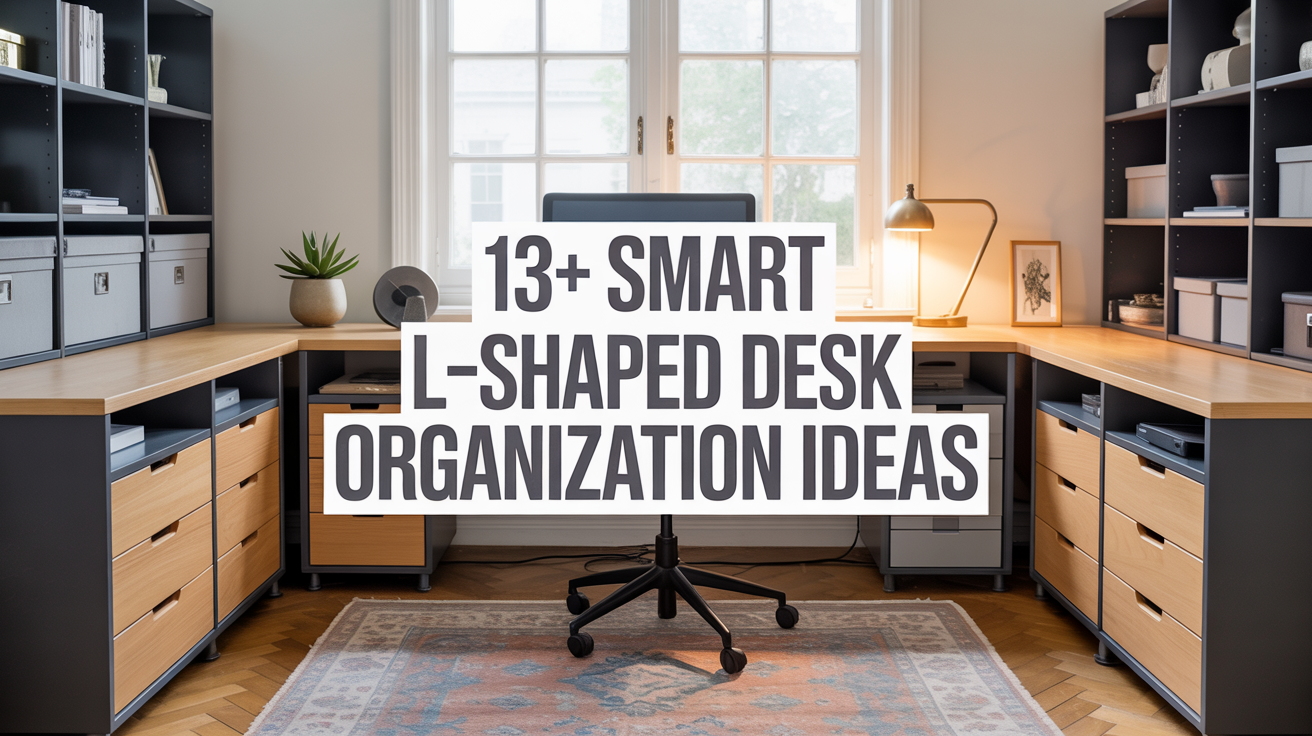13+ Smart L-Shaped Desk Organization Ideas
1. Use the Corner as the Command Center
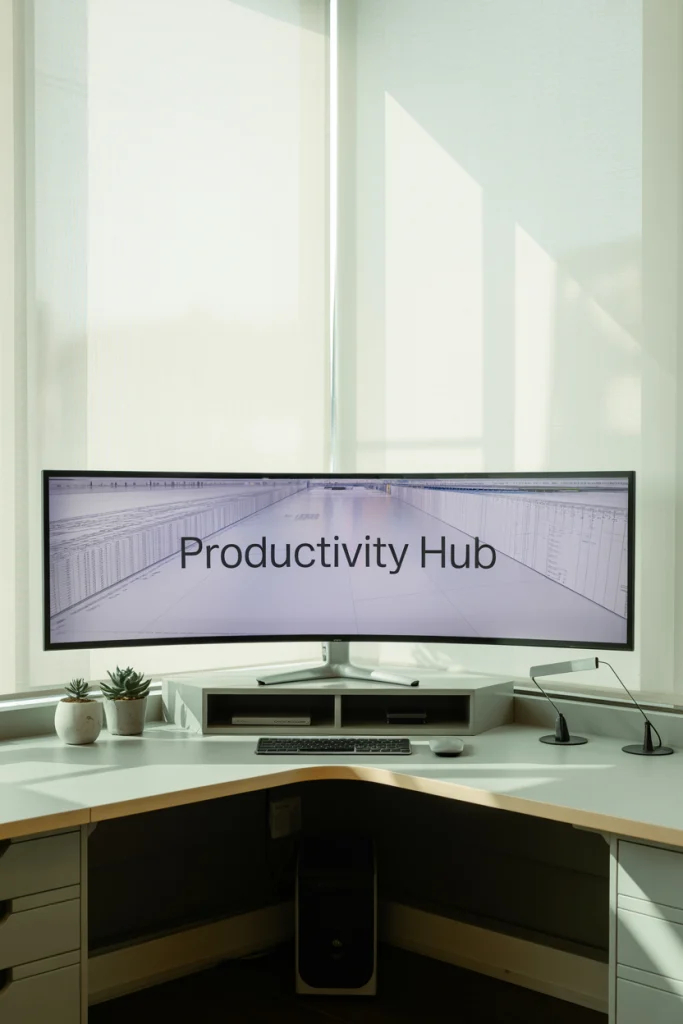
The corner of your L-shaped desk is the most powerful spot, yet many people waste it. Instead of letting it collect random clutter, make it the command center of your workspace. Place your main monitor or laptop there so you have the widest possible view of both sides of your desk. This position keeps your head movements minimal and your arms within easy reach of everything. If you use multiple screens, angle them to form a smooth curve so your eyes move naturally without strain. The corner space also works well for a small shelf unit or a riser that lifts your monitor and creates hidden storage underneath.
2. Dedicate One Side for Work and the Other for Storage
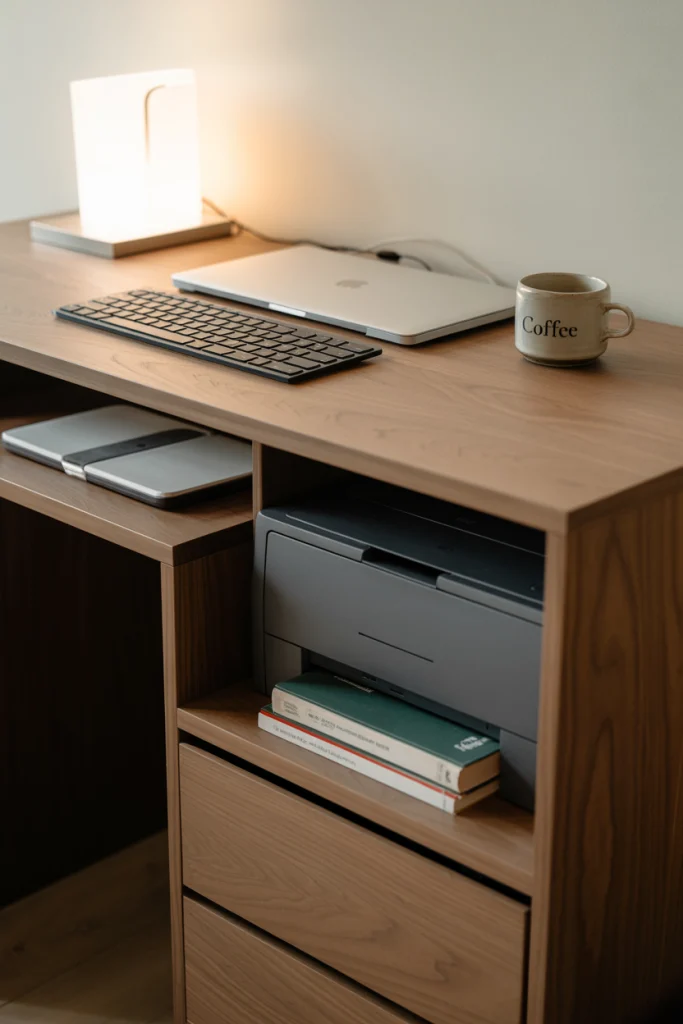
An L-shaped desk gives you two connected surfaces, but if you treat both the same way, clutter builds quickly. Instead, assign one side purely for active work—your computer, notebook, and daily essentials. Use the other side for storage, printers, or reference materials you need close but not right in front of you. This separation keeps your main workspace clean and your mind more focused. It also makes cleaning easier because each surface has a clear purpose.
3. Install Floating Shelves Above the Desk
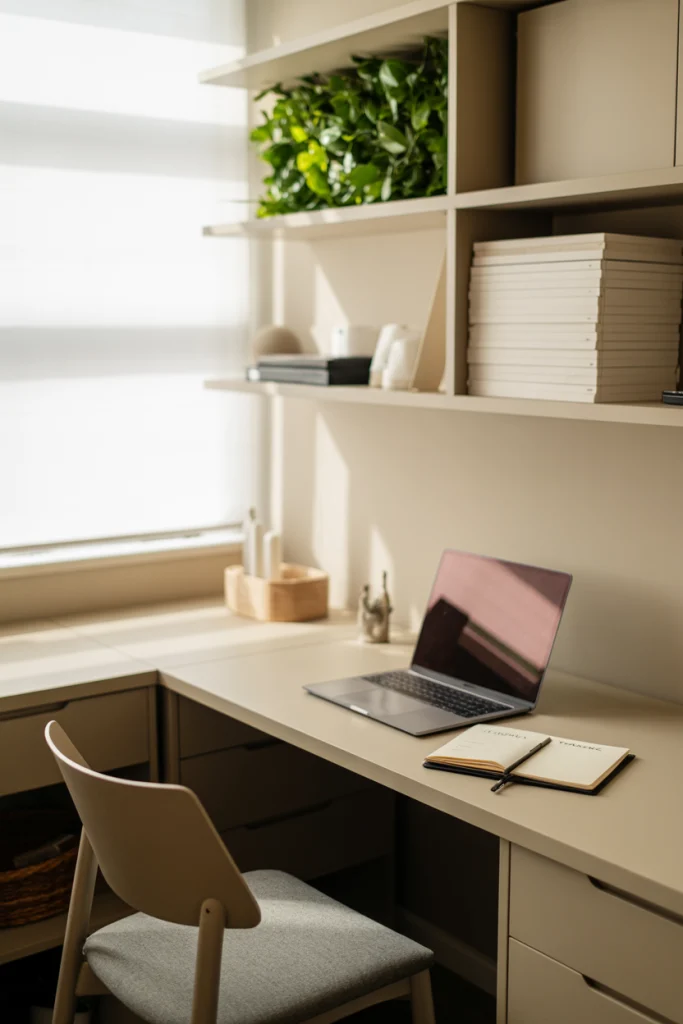
Walls are the most underused space in a home office, especially above an L-shaped desk. Installing floating shelves can triple your storage without taking up any desktop space. Keep the shelves at a height that’s easy to reach without stretching, and arrange them so the items you use most are in the middle. Store heavier items on the lower shelves and lighter or decorative pieces higher up. If you work with a lot of files, use matching file boxes or magazine holders so the space looks neat, not chaotic.
4. Use a Slim Drawer Unit Under One Side
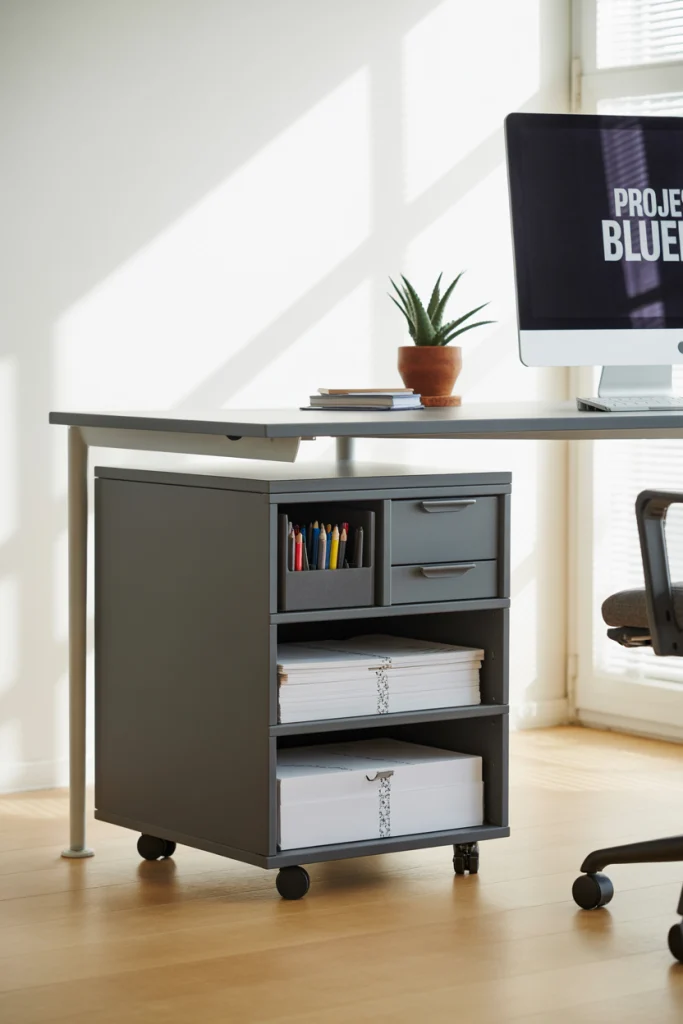
If your L-shaped desk doesn’t have built-in drawers, a slim rolling drawer unit can be a game-changer. Place it under the storage side of your desk so it doesn’t interfere with your leg space. Choose one with different drawer sizes so you can store everything from pens to larger office supplies. For extra flexibility, get one with wheels so you can pull it out when you need it and push it back when you don’t. A tidy drawer unit keeps small items from spreading across your desktop.
5. Add a Desk Riser for Multi-Level Storage
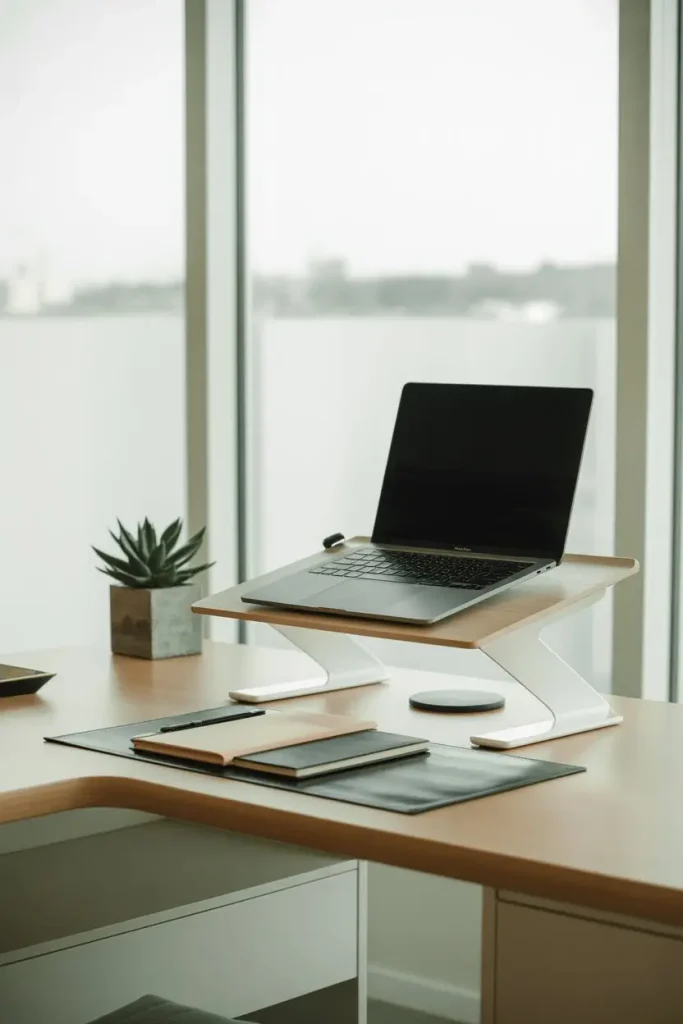
A desk riser creates a second level on your desk, which instantly doubles your usable space. Place your monitor or laptop on the riser, then store small items like notebooks, sticky notes, or chargers underneath. This vertical organization works especially well in the corner of an L-shaped desk, where you can stack and layer without feeling cramped. A riser also improves your posture by lifting your screen to eye level, which reduces neck strain during long work sessions.
6. Use Cable Management Solutions
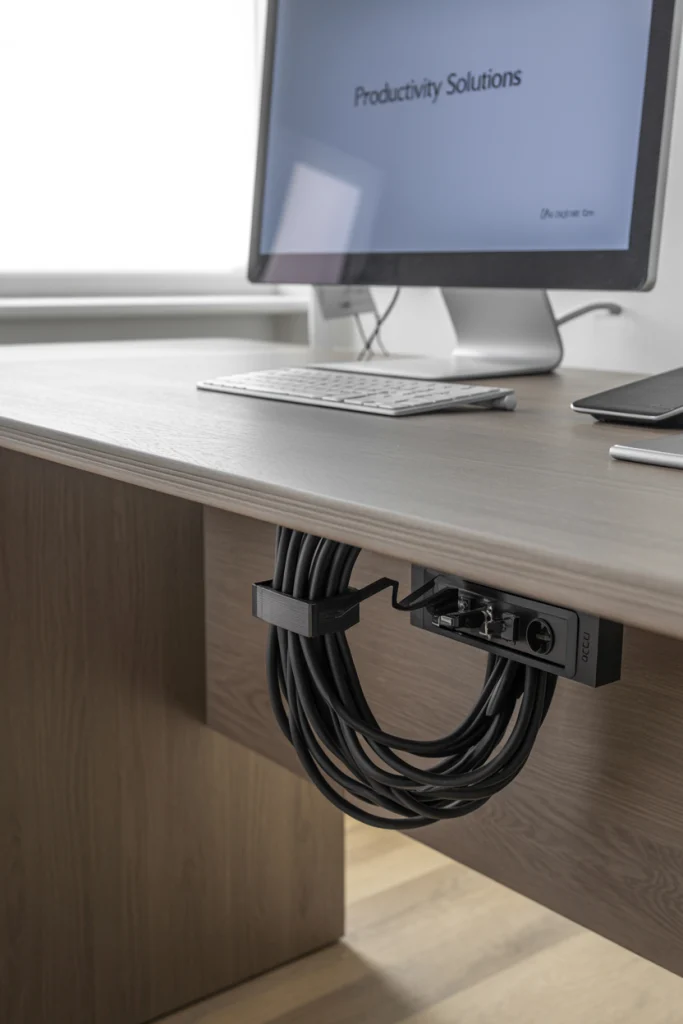
Cables are one of the biggest sources of desk clutter. On an L-shaped desk, wires can snake across two surfaces, making the space feel messy and overwhelming. Use cable clips, under-desk trays, or a cable sleeve to keep cords grouped and out of sight. Mount a power strip underneath the desk so all plugs are in one hidden spot. If you have multiple devices, label each cord so you can unplug or move them without guessing. Good cable management not only looks cleaner but also makes cleaning and troubleshooting much easier.
7. Keep Everyday Tools Within Arm’s Reach
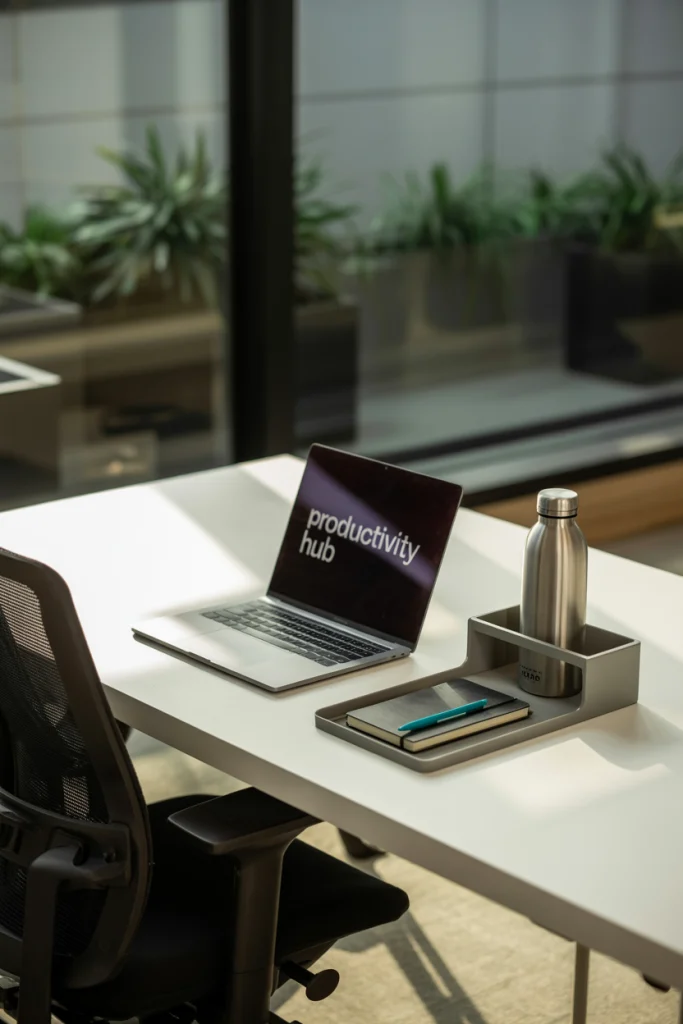
Your most-used items should be no more than an arm’s length away from your main seating position. This could include your phone, notepad, favorite pen, or a water bottle. Store them in a desk organizer or small caddy to prevent them from spreading out across the desk. Keeping essentials close reduces wasted movement and keeps you in a productive flow. The less you have to get up or reach across the desk, the more efficient your workflow becomes.
8. Use the Short Side for Creative Work or Hobbies
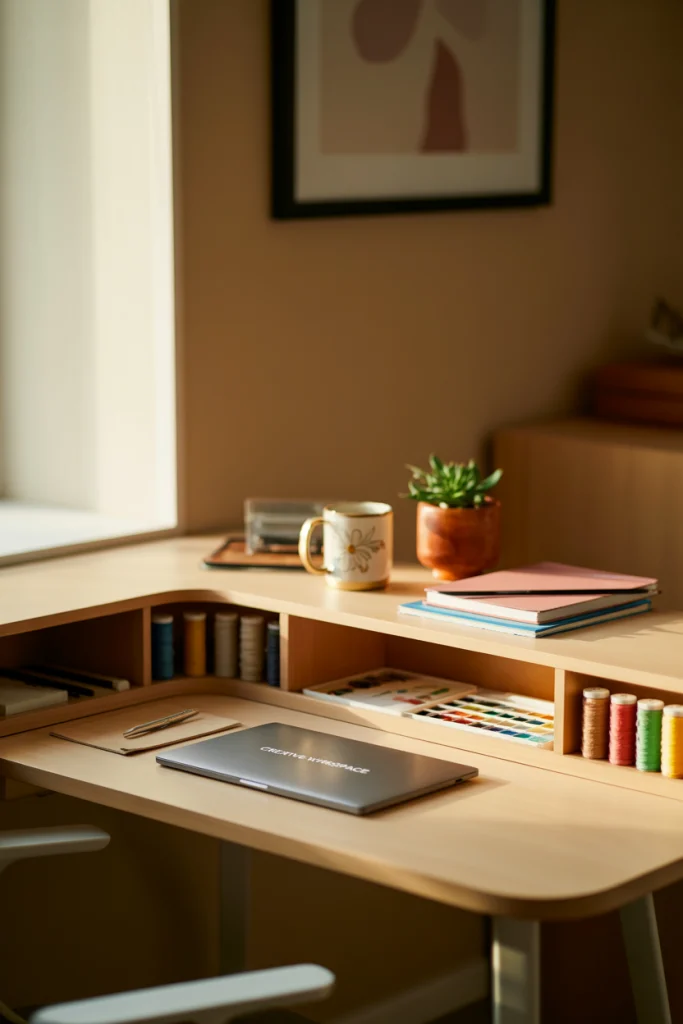
Not all desk time is computer work. The shorter side of your L-shaped desk can be your creative or hands-on zone. If you draw, sew, craft, or review physical documents, dedicate this space to that purpose. Keep tools and supplies for that activity in a small set of drawers or bins nearby so the area is always ready to use. This separation keeps your main work area free from paint, glue, or stacks of paper, while still letting you enjoy hobbies without setting up and tearing down each time.
9. Add Under-Desk Hooks for Bags and Headphones
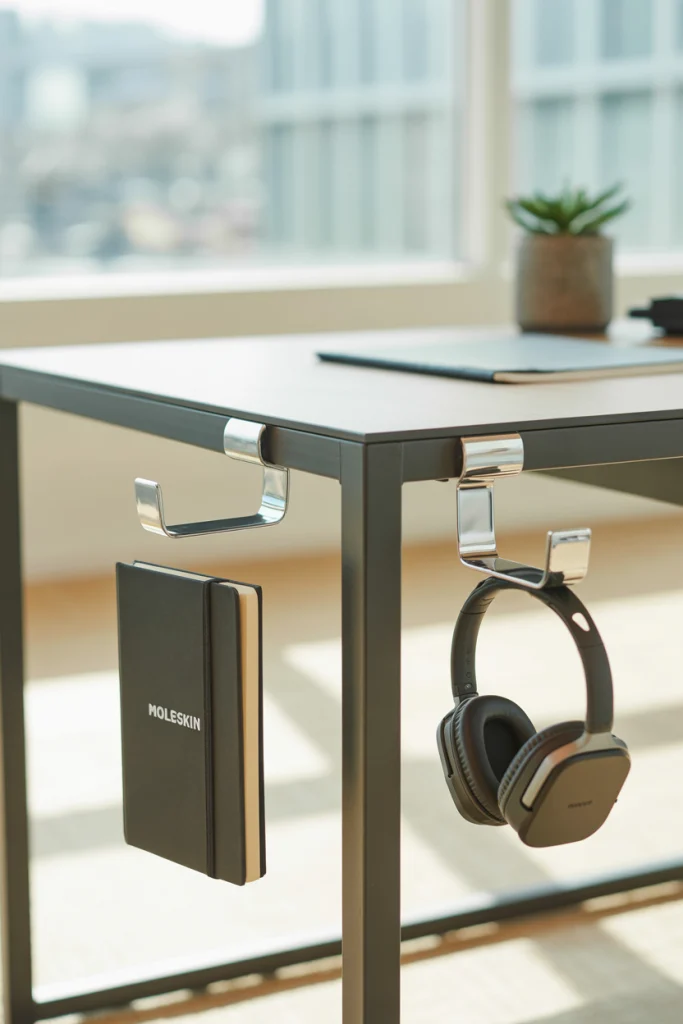
Bags, headphones, and even jackets can clutter a chair or the floor. Adding simple hooks under your desk solves the problem instantly. Mount a sturdy hook on each side so you can hang a backpack on one and headphones on the other. This keeps them close at hand but completely off the surface. If you often switch between sitting and standing, place the hooks where they’re reachable in both positions.
10. Use Lighting to Define Zones
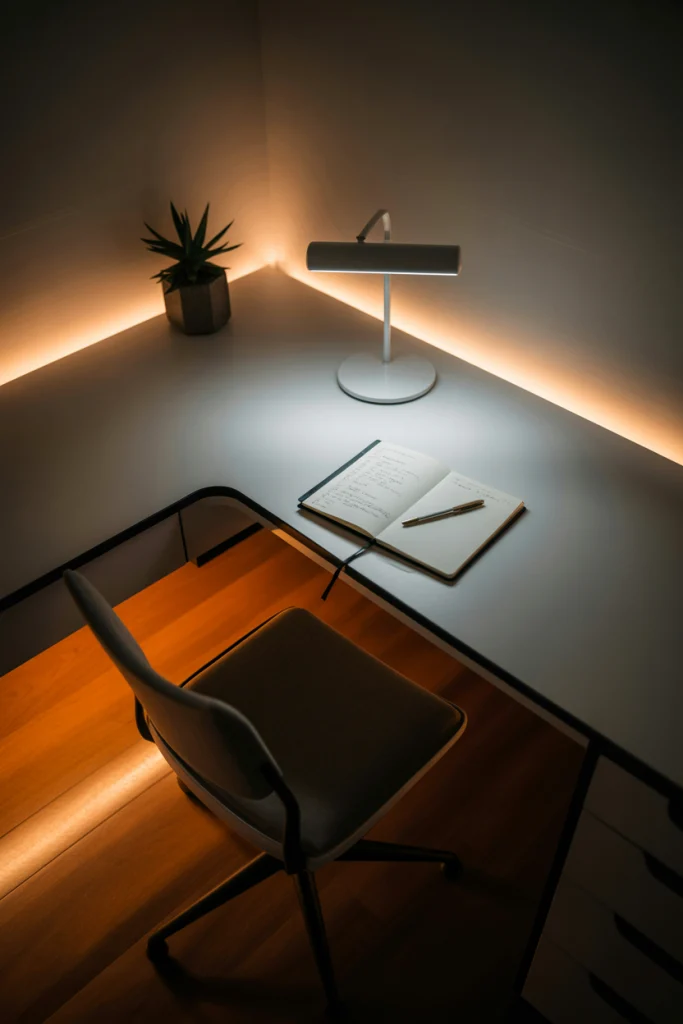
Lighting isn’t just about visibility—it’s about focus. Use different types of lighting to define the two zones of your L-shaped desk. A bright desk lamp on your main work side helps with focus tasks like reading or typing, while a softer lamp or LED strip on the storage or creative side creates a calmer mood. This visual separation can help your brain switch between types of work and reduce mental fatigue.
11. Keep a Clear Drop Zone
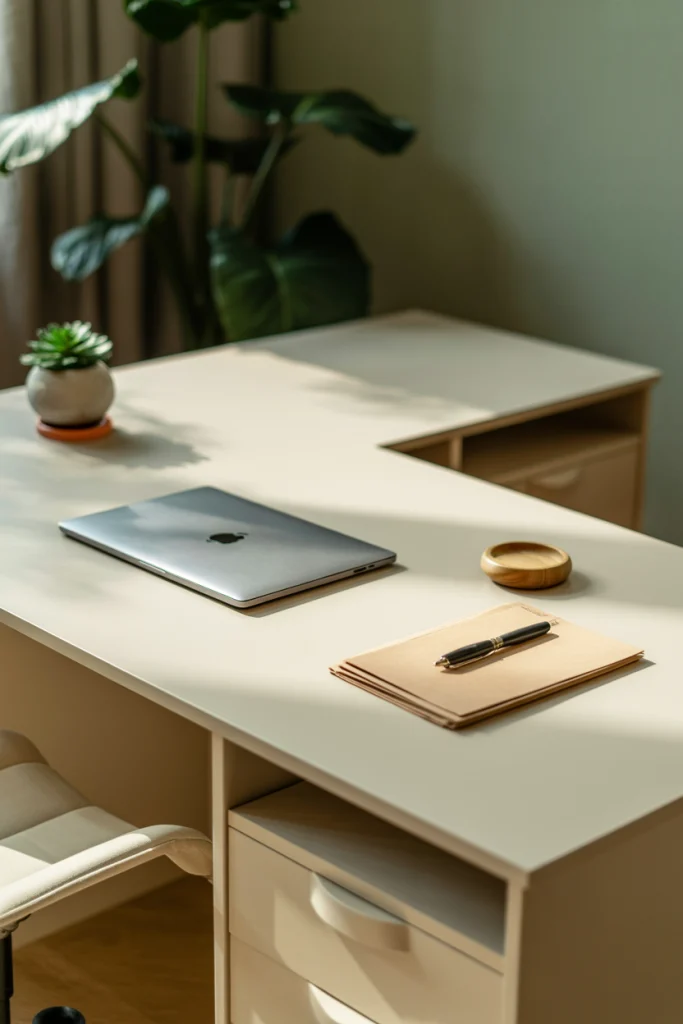
A “drop zone” is a small, clear area where you can place incoming items without cluttering your whole desk. On an L-shaped desk, the far corner of one side works well for this purpose. When you bring in mail, documents, or supplies, they go here first. At the end of the day, sort through the drop zone so it never becomes a permanent pile. This habit keeps your main workspace clear and makes it easier to process new items quickly.
12. Add a Pinboard or Whiteboard to the Wall
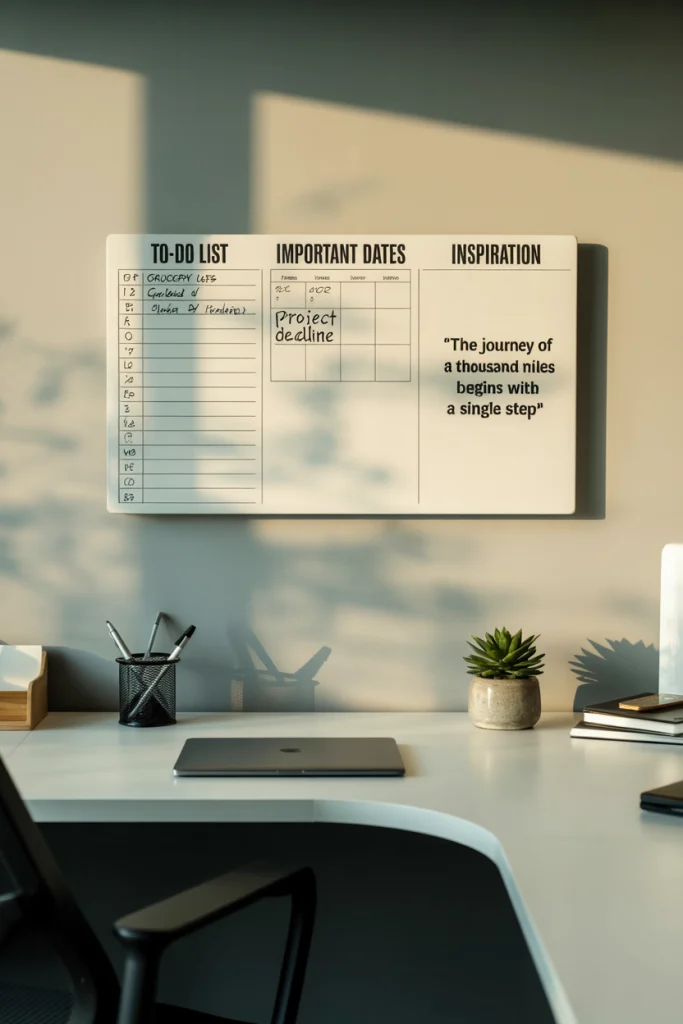
Keeping notes and reminders in your line of sight prevents mental overload. A pinboard or whiteboard mounted above one side of your L-shaped desk can hold important dates, to-do lists, or inspirational quotes. The key is to keep it organized—don’t let it turn into a random collage. Use sections for specific types of notes, and clear it off weekly so it stays fresh and relevant.
13. Store Rarely Used Items Away from the Desk
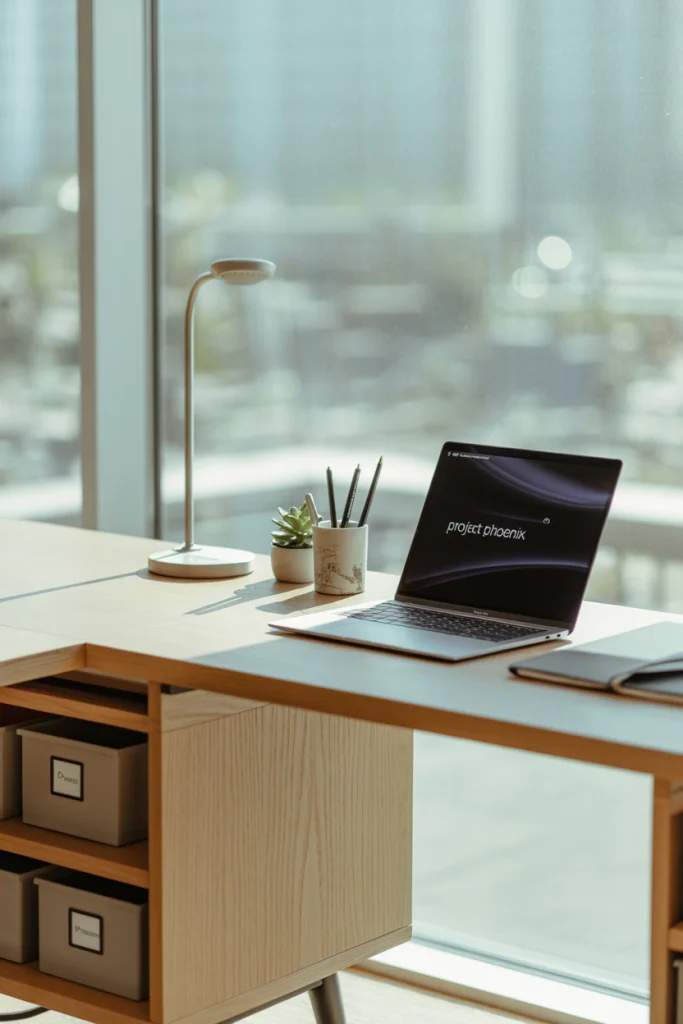
Even the best desk setup can’t stay tidy if it holds too much. If you have items you only use once a week or once a month, store them in a closet, cabinet, or shelf outside your immediate desk area. This includes extra office supplies, old files, or backup electronics. By keeping only active-use items on or near your desk, you give yourself more breathing room and reduce visual stress.
14. Personalize Without Overcrowding
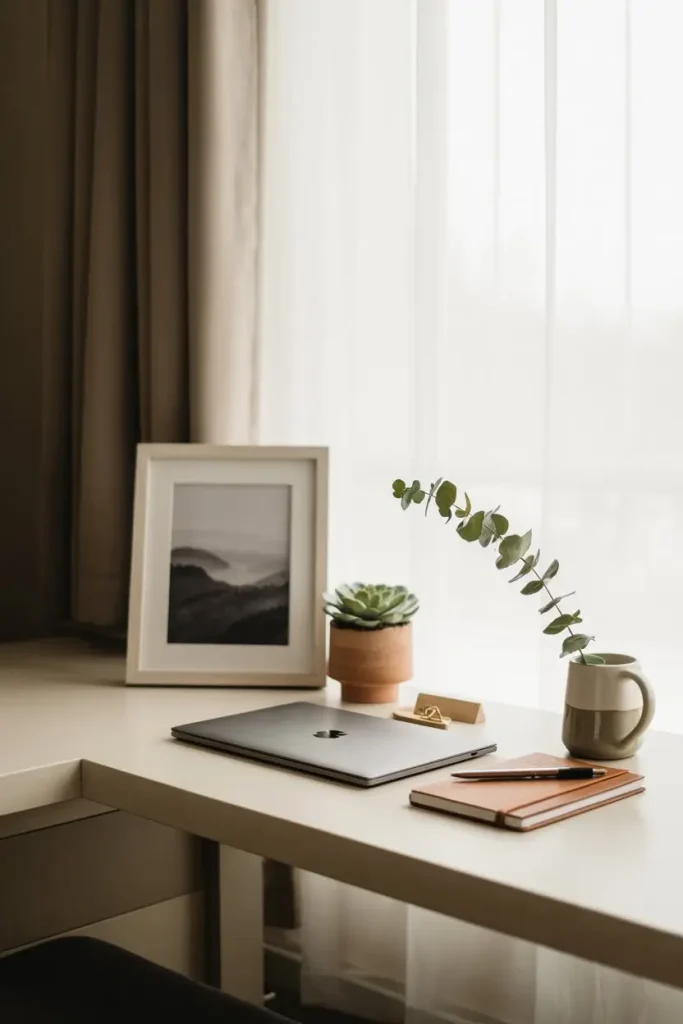
Your L-shaped desk should feel inviting, but too many personal items can eat into your workspace. Choose one or two personal touches that make you happy, like a framed photo, a small plant, or a decorative object. Place them where they don’t interfere with your workflow. The right balance of personal style and open space creates a workspace that feels both functional and inspiring.
